Still don’t know what to see and do in Nerja? Keep reading to find out about all the activities, events and must-dos in Nerja, together with Ruralidays!
It’s no surprise that Nerja was declared the most beautiful coastal village in Spain in 2016. Despite being relatively small, its 22,000 inhabitants can rightfully boast of their wonderful white-washed homes—which have afforded the town its place among the ‘White Villages’—crystal clear waters, 16km of beach, and many other things to do that make Nerja a must-see if you’re visiting the east of Malaga province.
Take a look at what you just can’t miss if you’re planning a Nerja getaway.
How do I get to Nerja?
Nerja can be easily reached by bus. The ALSA bus company has scheduled daily routes at affordable prices from Malaga (less than 2 hours), Marbella, Antequera, Almería and Granada.
If you prefer to travel by car, you can get here from Malaga by taking the Mediterranean highway (A-7 then N-340) towards Motril-Almería. Once you reach the town, you can leave the car in the underground carpark at the Plaza de España.
History of Nerja
The first written mention of Nerja comes from the Moorish poet Ibn Sadi, in the year 917, which refers to it as ‘a farmstead as large as a city, surrounded by leafy orchards’. At that time, Nerja boasted a manufacturing industry for the production of coloured tissues and silks, thanks to which it reached its greatest splendour and global fame. The Moors gave it the name Naricha or Narija, meaning “abundant spring”.
Although there are no prior references to or information about the settlements in the area where Nerja stands today, certain theories speak of the existence of some sort human settlement during the Upper Paleolithic, in the Cuevas de Nerja or Nerja Caves, and around the town centre, as well as the possibility of a settlement in Roman times, due to Nerja’s proximity to the Roman villa of Detunda, present-day Maro.
Following the surrender of Velez in 1487, Pedro de Córdoba took possession of Nerja on behalf of the Catholic Monarchs. Under Christian rule, the town began to lose inhabitants, so to avoid further loses, Joanna the Mad ordered Nerja to be repopulated with old Christians from Vizcaya, Valencia, Galicia and Malaga itself, and these moved into the abandoned homes and were granted exemption from paying tax and all other levies or excise duties, as well as from the sales tax or alcabala, and fishing fees.
Towards the end of the 16th century, the first sugar factory was set up, and at the end of the 18th century, a paper factory that was supplied with water from the Miel river and which operated until the 20th century. During the War of Independence, the English tore down the fortress that stood where the Balcón de Europa is today, and also destroyed the port constructed for cabotage.
What to see and do in Nerja
Balcón de Europa and old town
The first thing you should visit is the spectacular Balcón de Europa, the most famous place in Nerja. Its name harks back to an incident starring King Alfonso XII. The town was destroyed by an earthquake in 1884, hence the king made the decision to visit in person and see what damage had been sustained. As soon as he spied the rocky outcrop on which the 9th century Moorish fortress stood, he exclaimed: “This is the Balcony of Europe“.
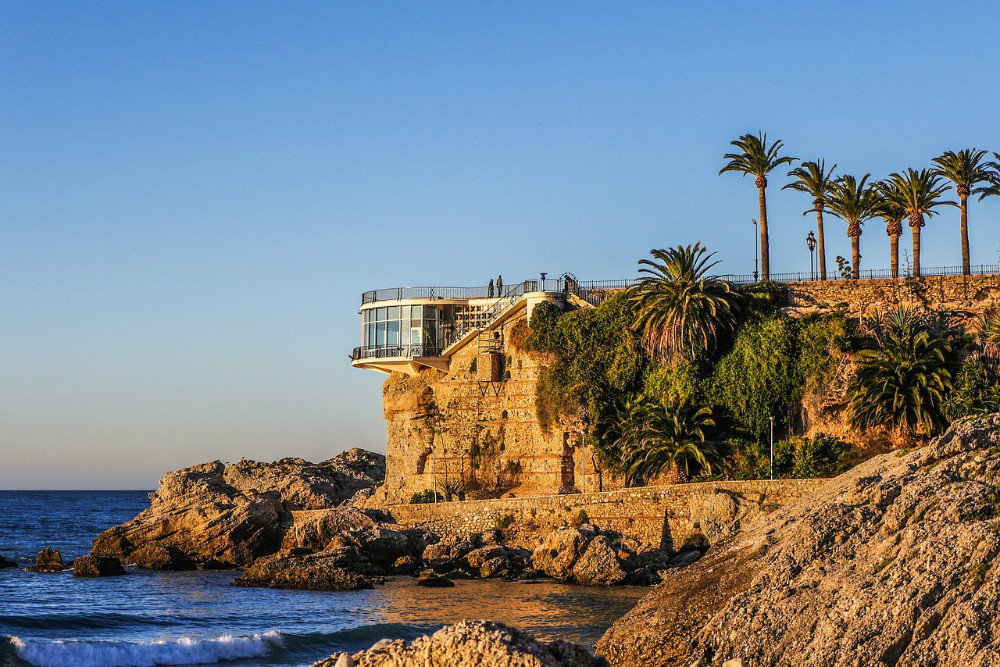
Indeed, from this spot you can take in some of the most breathtaking views of Nerja’s surroundings, such as the mountains of the Sierra de Almijara to your back, or some of the best beaches in Malaga, where tourists from all over the world bask in the Andalusian sun.
The promenade and areas around the Balcón de Europa are pedestrianised, and host a wide range of bars and restaurants that get much livelier in the evening.
During your visit to this town, be sure not to miss the sculpture of Alfonso XII, the Iglesia de El Salvador, a church dating to 1505 and built under the orders of Joanna the Mad, and which used to serve as the Guards’ tower equipped with cannon to defend the town from potential attacks, some of which can still be seen at the Balcón de Europa.
Cuevas de Nerja/ Nerja Caves
During your Nerja getaway, try to find time to visit the magnificent Prehistoric Cathedral, a.k.a. the Nerja caves. Located 3km north of the town, this 5 million-year-old cave was home to stone-age hunters.
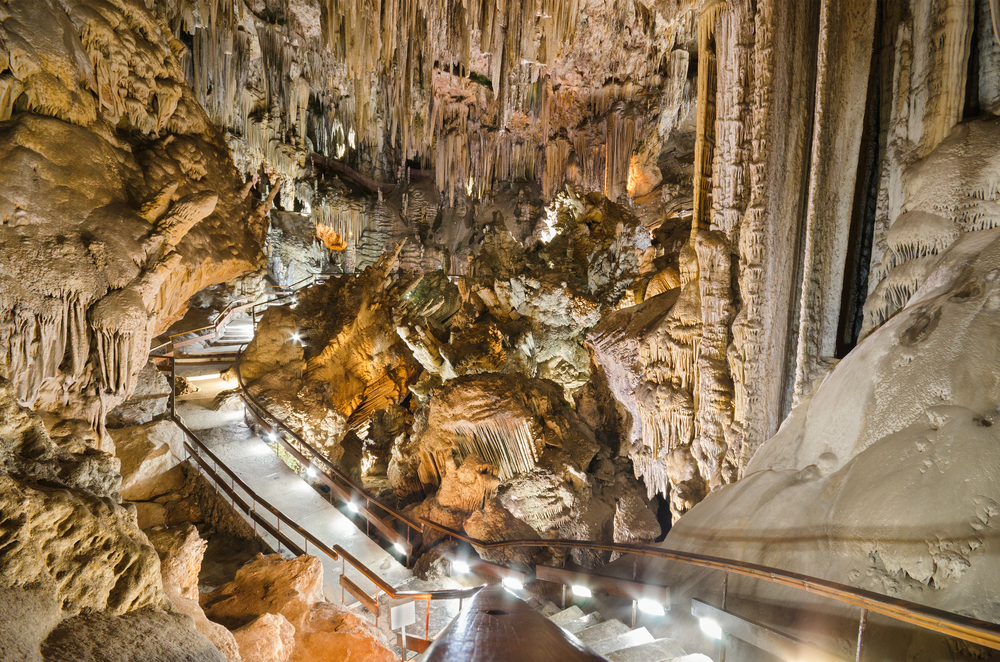
Today, it is home to the tallest stalactite and stalagmite formations in the world, the most impressive being a gigantic column located in the “Hall of Cataclysm”, which has been listed in the Guinness Book of Records since 1989 as the world’s largest. Discovered in 1959, the Nerja Caves have been declared a Historical and Archaeological Monument, also thanks to their great variety of cave paintings dating to prehistoric times.
In July, the Nerja Cave Festival is held in the “Sala Cascada” or Waterfall Room. Here, stars of Spanish and international dance and music create a magical atmosphere, giving rise to one of the most spectacular events in the world.
If you’d like to visit, remember to take some warm clothing as the temperature drops significantly once you’re inside the cave. Meanwhile, a visit to the Nerja Caves is not recommended if you suffer from claustrophobia, and children must be accompanied by an adult because the track consists of stairs, slopes and bridges. In terms of price, adults pay €11, children between the ages of 6 and 12 pay €9, and entrance is free for under 6s.
Museo de Nerja/ Nerja Museum
If you’re a history buff, then you’re in the perfect place! Learn all about Nerja’s history and culture from paleolithic times up to the swinging 60s, in just one hour. A visit to the museum can be combined with the Caves of Nerja (€11 for both sites). Seize the opportunity and kill two birds with one stone!
- From 8th September to 22nd June: 10:00 AM – 4:30 PM (closed on 1st January and 15th May)
- From 23rd June to 8th September and Easter: 10:00 AM – 7:00 PM
- 28th February, Andalucia day
- 18th May, International Museum Day
- 27th September, International Tourism Day
- Every Monday for EU citizens
Acueducto del Águila/ Eagle’s Aqueduct
Dating to the mid-19th century, the Acueducto del Águila, also known as the ‘Eagle’s Bridge’ (Puente del Águila), was built by Francisco Cantarero over the Maro river to supply water to the San Joaquin sugar refinery. In the centre is a small temple inscribed with the phrase ‘Pura y limpia concepción‘ Together with the Caves and the Balcón de Europa, the aqueduct is one of the symbols of Nerja.
Nerja beaches
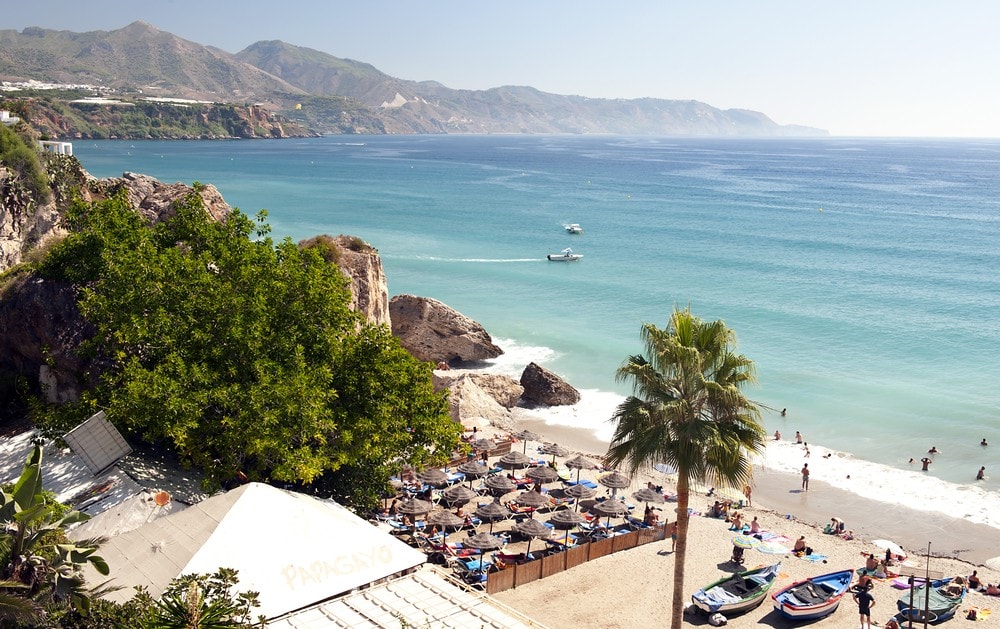
Nerja boasts some 16 km of coastline, twelve of which comprise beaches and coves with excellent bathing conditions. The best known are Burriana (the biggest), Playazo, Torrecilla and Calahonda. They are all fully equipped with all types of facilities, except for the coves in Maro, where beach bars, etc. are not allowed.
Maro
Why not also pay a visit to the old town of the neighbouring town of Maro, which conserves its traditional architecture. In Maro, you can also pop into the Iglesia de Nuestra Señora de las Maravillas, a church in which the image of the Virgin of the Wonders—patron saint of Maro—is worshipped. If you prefer, you can also head over to the Natural Park of the Cliffs of Maro-Cerro Gordo, which is home to a series of small, unspoilt coves that are difficult to get to but also definitely worth the effort. The hinterland of this area is also home to the Fuente del Esparto, the Pinarillo Recreation Area, and the upper course of the Chillar river.
Festivals and events in Nerja
The town of Nerja is particularly crowded between July and September, due to the festivals that are held at this time of year.
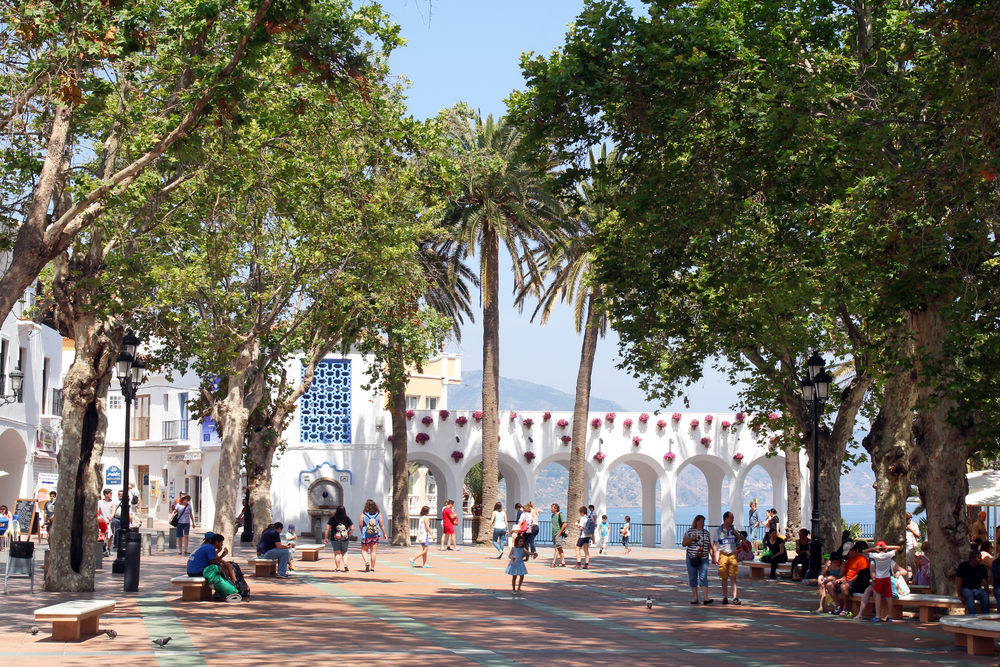
San Antón (Maro)
When: 16th and 17th January
One of the most traditional fiestas celebrated in Maro, in which bonfires are lit to beg St. Anthony, patron saint of Maro, to protect pets throughout the year.
These bonfires are still a common sight on the doorsteps of homes on the night of the 16th, with neighbours and tourists gathering round to savour local products. At night, the biggest bonfire is set alight in the main square of Maro, following which the prizes for the festival are awarded. Later, there are various performances until well into the night.
On the 17th of January, the day of St. Anthony is celebrated with a mass in the saint’s honour. In the afternoon, a procession is held to a backdrop of fireworks, with the festivities culminating in a street party.
Carnival
When: February
In Nerja there is a great fondness for Carnival, with the whole town getting involved and notable for the number and variety of costumes, which are more numerous on the days on which ‘King Momo and the Nymphs’ are named.
Celebrations cover 3 days packed with laughter and colour, where people flaunt their imaginations, creating costumes and disguises and composing fun choral folk songs known as chirigotas, which are later judged in a competition. The last day of Carnival sees the burial of the Chanquete (an anchovy-like fish), with participants dressed in black and mourning the death of the chanquete.
Easter
When: from 5th – 12th April 2020
In Nerja and Maro, Holy Week takes on an austere and respectful slant—processions are watched and participated in, some brotherhoods enjoy widespread popular devotion, and this is displayed openly during the parades.
Cruces de Mayo
When: 3rd May
The Cruces de Mayo or May Crosses, at the start of this month, is a time-honoured tradition in Nerja. On this day, around 30 large floral crosses are displayed around the town, which serve to adorn the ‘altars’ and stalls located on various streets and which host singing, dancing, and the consumption of local produce.
Each stall offers visitors traditional cuisine exclusive to that day, the star of the show being cane honey, which is used to whip up treats such as medlars, sweet potatoes, cod and parsley fritters, popcorn, and the top dish of the day, “la arropía“, which consists of cane honey, simmered and later kneaded.
Romería de San Isidro
When: 15th May
The romería de San Isidro, a pilgrimage, has turned into a mass event attended by throngs of locals and tourists alike. Nerja begins to celebrate the day of San Isidro, the patron saint of labourers, with a Rocio mass in the church of El Salvador, where the saint is offered products from the lands of Nerja, while community groups, dance companies and friends gather. The romería pilgrimage starts at the Balcón de Europa, from where the saint—mounted on an ox-drawn cart—is taken in a procession to the Caves of Nerja.
While completing the route to the chapel of San Isidro, as well as at each stop-off, people eat, drink, and dance ‘sevillanas‘. After leaving the saint in his chapel, the crowds continue the festivities until well into the small hours.
San Juan
When: night from 23rd to 24th June
If you want to enjoy the city at its best, go on the 23rd of June when the night of San Juan is celebrated, a festival closely connected to the sea during which the arrival of summer is celebrated. The rituals observed on this night include the burning of the ‘júas‘ or Judases, moragas and diving into nine waves after jumping over the fire, making three wishes: all of this takes place on the beaches of Burriana, La Torrecilla, and El Playazo.
The traditional food eaten on this day is espetos de sardinas (skewered sardines) and a sweet speciality called ‘tortas de San Juan’ made with flour, sugar and anise.
Virgen del Carmen
When: 16th July
Nerja—as a coastal town with maritime origins—celebrates the feast of the Virgen del Carmen, patron saint of the fishing community and sailors.
The fiesta kicks off with a floral offering made on the afternoon of July the 15th. The following day, a huge public moraga is held, accompanied by folklore. In the afternoon, after the mass and as a climax to the traditional maritime celebration, the Virgin is paraded across the sea in typical fishing boats.
Caves of Nerja Festival
When: July
The Caves of Nerja were first opened to the public on Sunday the 12th of June 1960, in what would go on to be the 1st International Festival of the Cave of Nerja. The impact of this event—which ushered in a new cultural era for the Costa del Sol—was international, given that for the first time in the history of dance, a work of classical ballet was performed inside of a cave.
In the 50 years since its discovery, the cave has become one of the most important cultural and scientific attractions in the south of Europe. During the Nerja Cave Festival, performances of the world-renowned Ballet Flamenco are put on, as well as the Chamber Orchestra, lyrical recitals and other forms of artistic expression.
Tourist Day
When: 27th, 28th and 29th September
Following the caves’ discovery, Nerja began to celebrate Tourist Day. On the last weekend in September, a variety of cultural and culinary events are held on the promenade of the Balcón de Europa.
Feria de las Maravillas
When: from 4th to 8th September 2020
The fair of the Virgen de las Maravillas is celebrated in Maro around the 8th of September, when a mass is held in honour of the Patron Saint, with the Virgin then paraded through the streets of the town. Music and public ‘moragas‘—where sardines, nuts, etc are roasted in the open air—form the backbone of the festivities, which originated in the 16th century.
Competitions such as the election of the Queen and her Maids of Honour, as well as children’s Queen and Maids, alongside the Municipal Band, flamenco performances, fireworks and typical food stalls fill the four days of Maro’s feria.
Feria de Nerja/ Nerja Fair
When: from 8th to 12th October 2020
The patronal feasts in honour of St. Michael the Archangel and the Virgen de las Angustias, introduced in 1804, are held in the first half of October. Events are kicked off with the illumination of the facade of the Real de la Feria, and after a nocturnal procession of the patron saints all manner of activities take place, from a festival of flamenco singing to sports competitions, street parties, and a wide range of music performances.
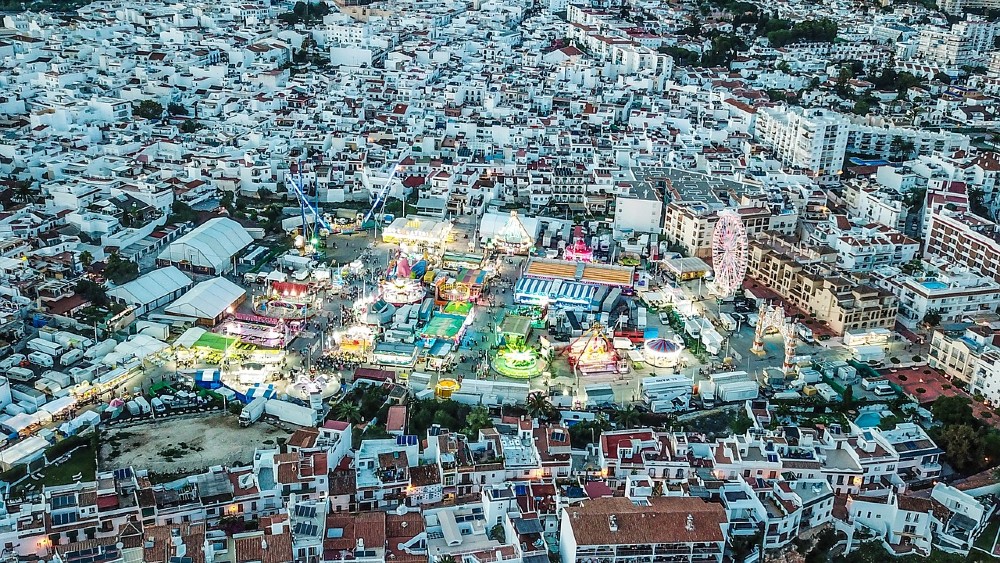
Nerja cuisine
Nerja’s cuisine is typically Mediterranean, rich, and varied. Highlights include fresh fish and tropical fruit. The town’s most typical dishes are paprika with fish and clams, fish casserole with noodles, ajoblanco with grapes, ajocolorao, grilled Burriana sea bream, cabbage, fried pumpkin with sardines, choto (kid) in almond sauce and the fried fish commonly found all over the Costa del Sol.
For years now, the introduction of numerous subtropical crops to the whole region of Axarquía (avocado, chirimoya, mango, papaya, etc) as well as greenhouse crops, has contributed many riches to traditional cuisine.
Quick facts about Nerja
- Area: 85 km2
- Population: 21,061 (2018)
- Demonym: nerjeños. Nickname: morralleros
- Location: at the eastern-most end of the Axarquía region and, by extension, the province of Malaga, in the foothills of the Sierra de Almijara. The town, standing 26 metres above sea level, is 45 kilometres from Malaga.
- Average rainfall: 460l/m2
- Average annual temperature: 20°C
- Website: https://turismo.nerja.es/
Nerja Tourist Office
The Nerja Tourist Office is located at Calle Carmen 1, on the ground floor of the Town Hall, next to the Balcón de Europa promenade.

Telephone: 952 52 15 31
Email: [email protected]
Opening times:
- Monday to Friday: 10:00 AM – 2:00 PM and 4:30 PM – 8:00 PM
- Saturdays and Sundays: 10:00 AM – 1:30 PM
If you have any questions at all, please do not hesitate to enquire here as they speak Spanish, English, French and German.
Where to stay in Nerja
You have the choice between some of the best holiday homes and accommodation in Nerja, meaning you won’t have to worry about where to stay during your Nerja getaway,
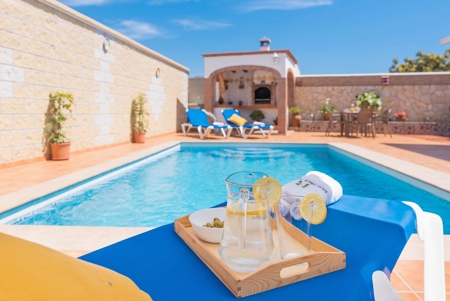
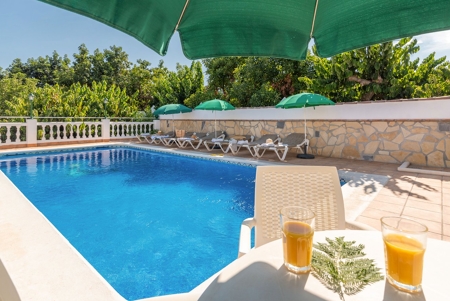
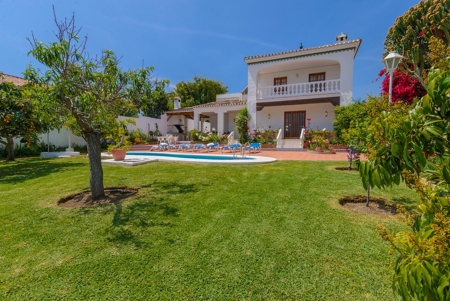
Don’t miss a thing thanks to our guide to Nerja, made especially for you!

 (5)
(5)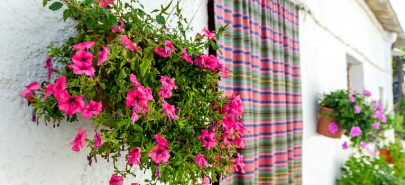
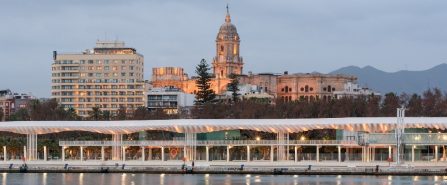
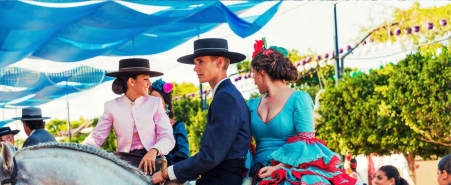

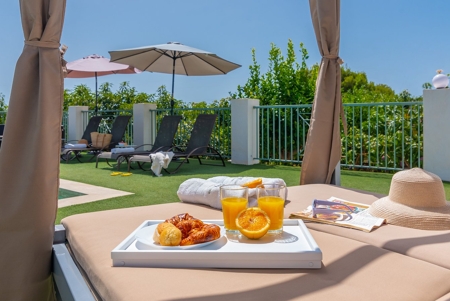

Great post on places to visit in Nerja. Of course, if you are a beach lover you must visit the beautiful Burriana Beach! There’s a great restaurant called Ayo’s that sells freshly cooked paella for around 6 euros. The town of Nerja is quaint with its whitewashed streets and shops. We love Nerja and think everyone should visit at least once!
Hi Nerja Girl!
Thanks for sharing these tips. We love when the locals share this valuable information.
Keep on reading and sharing 😉
Regards!
I really like what you guys are up too. This type of clever work and exposure! Keep up the superb works guys I’ve incorporated you guys to our blogroll.
Thank you John 😀 Keep following us to get to know more about Andalusia!